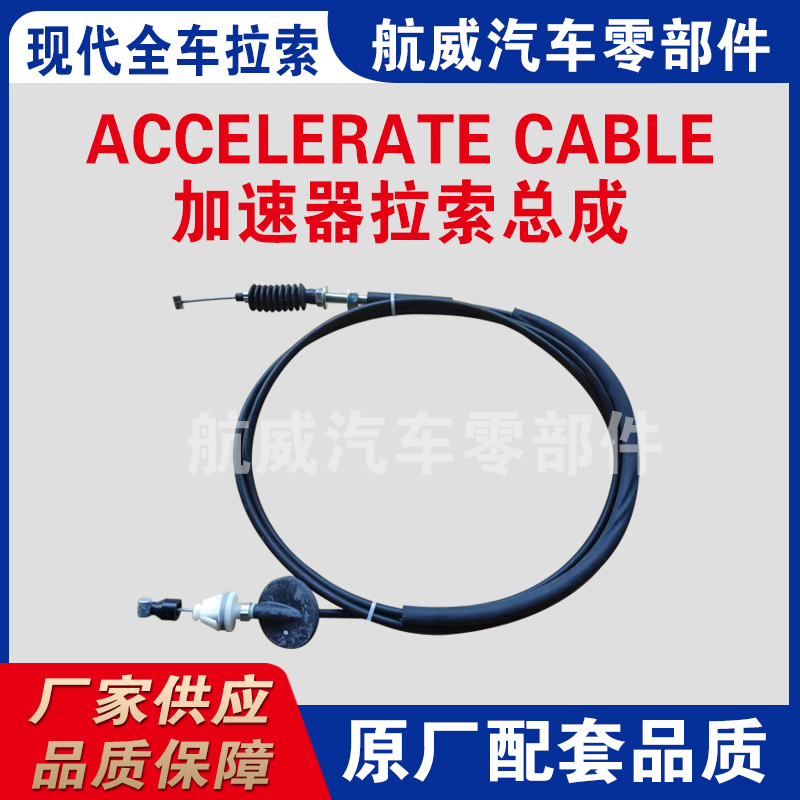Adjusting the Carburetor Choke Cable for Optimal Engine Performance and Efficiency
Understanding the Carburetor Choke Cable
When discussing internal combustion engines, one element that often surfaces is the carburetor choke cable. This crucial component plays a significant role in the operation of an engine, particularly in cold weather conditions. Understanding its function and maintenance can greatly improve your vehicle's performance and longevity.
What is a Carburetor Choke Cable?
The carburetor choke cable connects the driver's throttle control to the choke mechanism in the carburetor. The choke itself is a device that restricts airflow to the engine during startup, particularly when it is cold. By restricting airflow, the choke enriches the fuel-air mixture, ensuring that the engine receives the extra fuel it needs to start efficiently. The choke cable allows the driver to manually or automatically operate this mechanism.
Function of the Choke
When starting a cold engine, the fuel might not vaporize properly due to low temperatures. The choke counteracts this by providing a richer fuel mixture, which is essential for smooth engine operation during the initial startup phase. Once the engine warms up, the choke must be disengaged to allow for proper airflow, which is crucial for optimal performance and fuel efficiency.
Manual vs
. Automatic ChokesThere are two main types of chokes manual and automatic. A manual choke allows the driver to operate the choke cable—typically by pulling or pushing a knob in the vehicle. This gives the driver complete control over the operation of the choke. Conversely, an automatic choke uses a thermostat mechanism to manage the choke operation without the driver's input. While both types aim for the same outcome, manual chokes require a more hands-on approach, while automatic chokes offer convenience.
Importance of Maintenance
carburetor choke cable

Just like any other vehicle component, the carburetor choke cable requires regular maintenance to ensure it remains functional. Over time, the cable may stretch, fray, or become disconnected, leading to poor engine performance or difficulty starting the vehicle. Regularly inspecting the choke cable for wear and ensuring it is properly lubricated can help avoid these issues. If you notice that the choke is not engaging or disengaging properly, it may be time to replace the choke cable.
Troubleshooting Common Issues
Drivers may face several common issues related to the carburetor choke cable. These include
1. Difficulty Starting the Engine If you find it hard to start your vehicle, especially in colder weather, the choke may not be functioning correctly. Check the choke cable to ensure it is properly connected.
2. Stalling or Rough Idle If the engine stalls or runs rough after starting, it could indicate that the choke is stuck in the closed position. Inspect the cable for jams or disconnections.
3. Unusual Fuel Consumption A malfunctioning choke can lead to increased fuel consumption. If you observe that your vehicle is using more fuel than usual, it may be time to examine the choke mechanism.
Conclusion
The carburetor choke cable plays an integral role in the performance of an internal combustion engine, especially under cold conditions. A well-functioning choke system ensures that the engine starts easily and runs smoothly. By understanding its purpose and importance, and by maintaining the choke cable, drivers can enhance their vehicle's efficiency and reliability. Regular inspections and timely repairs can save both time and money in the long run, ensuring a smooth driving experience year-round.
-
Workings of Clutch Pipe and Hose SystemsNewsJun.04,2025
-
The Inner Workings of Hand Brake Cable SystemsNewsJun.04,2025
-
The Secrets of Throttle and Accelerator CablesNewsJun.04,2025
-
The Hidden Lifeline of Your Transmission Gear Shift CablesNewsJun.04,2025
-
Demystifying Gear Cables and Shift LinkagesNewsJun.04,2025
-
Decoding Clutch Line Systems A Comprehensive GuideNewsJun.04,2025
